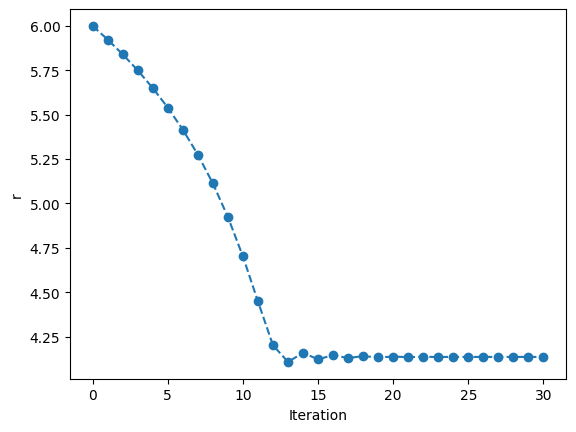Exercise#
The first step was to write a function for the first derivative of the potential energy.
def first_derivative(r, A, B):
"""
The first derivative of the Lennard-Jones potential model.
Args:
r (float): Atom-atom distance (Å).
A (float): Interaction parameter (eVÅ^12).
B (float): Interaction parameter (eVÅ^6).
Returns:
(float): Potential energy.
"""
return -12. * A / r ** 13 + 6 * B / r ** 7
We when implement a gradient descent method.
alpha can have different values, but alpha=100 finds the minimum within 30 steps from r=6.0 initially.
A = 1e5
B = 40
alpha = 100
r = 6.0
r_list = [r]
for i in range(30):
E_dash = first_derivative(r, A, B)
r = r - alpha * E_dash
r_list.append(r)
It is easier to show the convergence with a plot.
import matplotlib.pyplot as plt
plt.plot(range(31), r_list, 'o--')
plt.xlabel('Iteration')
plt.ylabel('r')
plt.show()

